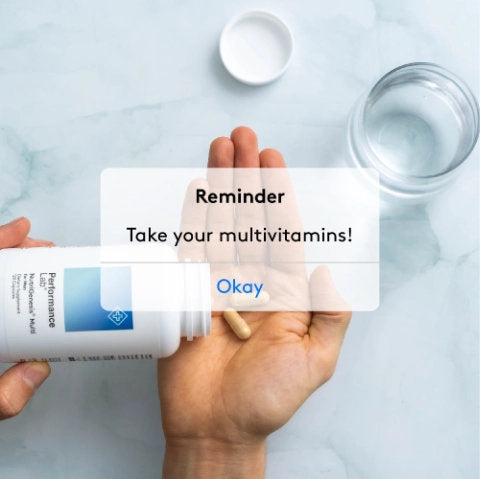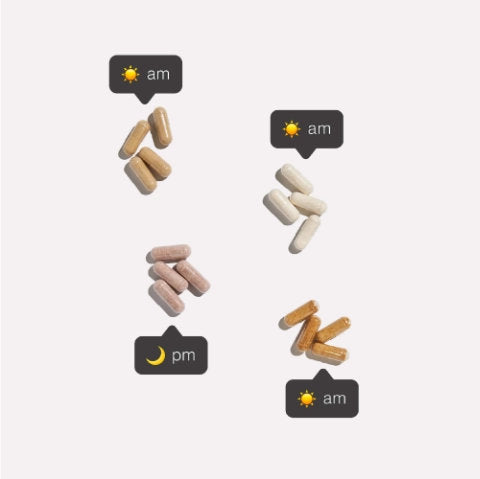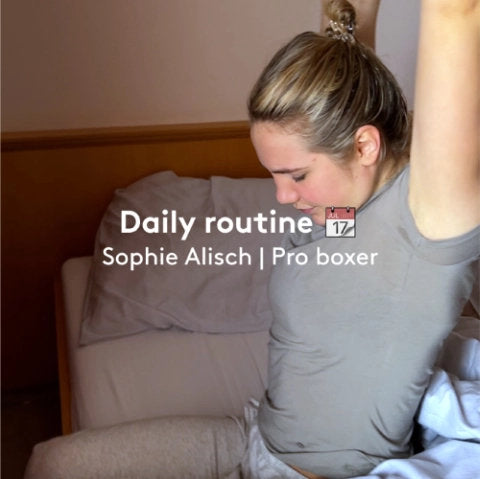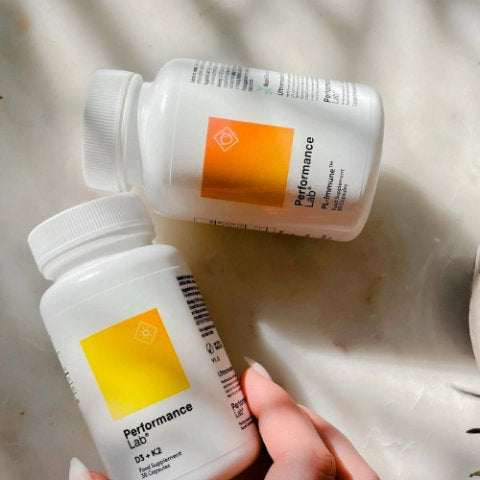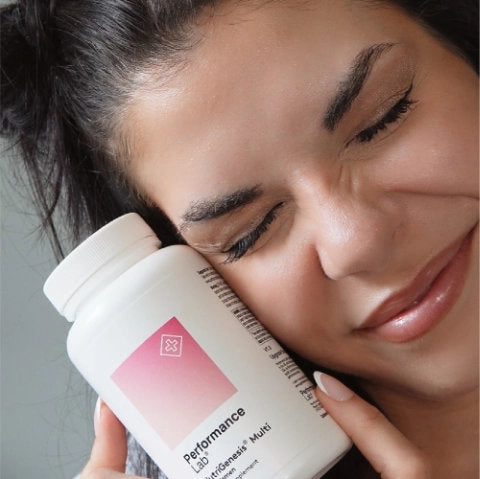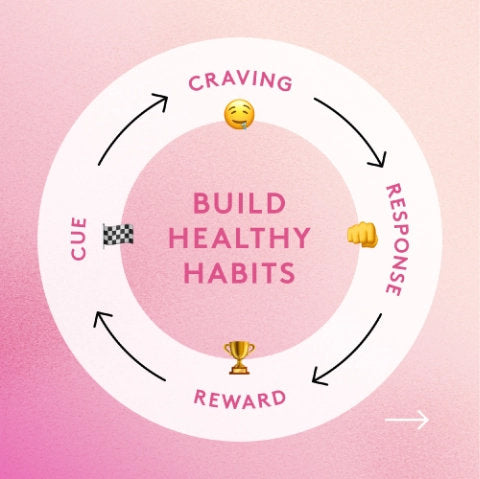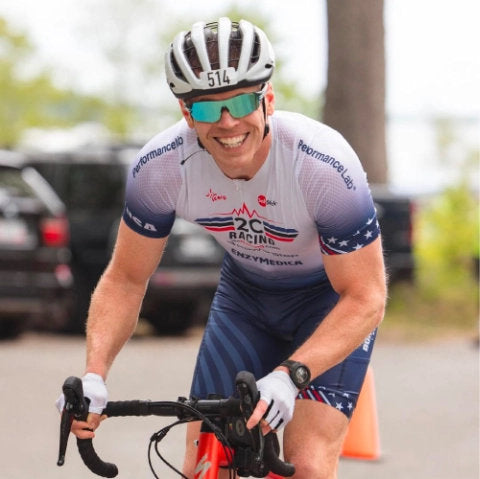Whether you're getting back into the fitness game or you are brand new to it, getting a good workout plan together can be really challenging.
What exercises do you do? How many reps? How many sets? What is the appropriate weight? Which muscles do I train? There are a lot of factors to consider…And the thing with most programs you'll find online is that they're not actually geared towards beginners—they expect you to know exactly what you're doing.Rather than searching through pages and pages of workouts, were giving you the best 7-day workout plan for beginners. It's designed to help you build muscle and strength, with no crazy exercises, expensive equipment, or frustration. Let's get to it.
The Benefits of Physical Activity
We all know that exercise is good for us, but why? Here are some of the top benefits of regular physical activity:
Boosts mood
Ever notice you feel happier after a good workout? That's because exercise influences areas of the brain involved in regulating stress and anxiety 1. It increases the sensitivity of serotonin and norepinephrine, which help reduce feelings of depression. But exercise also boosts levels of endorphins—your feel-good hormones that also act as natural pain relievers 2.
Stimulates weight loss
Inactivity, in addition to other factors, is a major contributor to obesity. A healthy diet combined with regular physical activity helps to increase metabolic rate and burn more calories 3, 4.
Studies consistently show that aerobic exercise and resistance training are the keys to maximizing fat loss and building muscle—both of which are key for weight management 5.
Builds stronger bones and muscles
Exercise plays a critical role in building strong bones and muscles because it promotes the release of hormones that trigger amino acid uptake in muscles to facilitate growth and repair 6.
But weight-bearing exercises and resistance training are also critical for stimulating osteogenesis (bone-building) to maintain bone health and strength 7.
Reduces risk of chronic disease
Lack of physical activity is a major cause of all sorts of chronic disease. Studies find that regular exercise helps to improve insulin sensitivity, cardiovascular fitness, and body composition, which has a profound impact on metabolic and cardiovascular health outcomes 8.
Helps you sleep better
Supplementing with a natural sleep aid may benefit sleep, but so can exercise. One study found that 150-minutes of moderate-vigorous activity weekly improved sleep by 65% 9!
Related Post: Best Nighttime Supplement for Muscle Growth
Making Exercise A Habit
Starting a new exercise program is great and your motivation is likely high right out of the gate, but as the weeks (or even days) start to pass, life gets busy. You have things to do and your workout time seems to disappear into thin air… and before you know it, two weeks have passed and you haven't done one training session.Sticking to a program can be challenging if it's completely new to you, but carving out time daily to get it done becomes important if you want to reach your long-term goals. Saying you'll exercise 2-3 times per week is a great start, but to truly develop a habit, you have to be consistent about it.
Rather than sticking to just a few days a week, make it an everyday thing. It doesn't have to be intense training or even weights, sometimes just a 30-minute walk on your off days to get your heart pumping is enough to keep you motivated and on track.
Here are a few tips to keep you on track with your training:
- Schedule out time When you set time aside to complete your workout, you're more likely to get it done
- Get it done early Some people find that getting their workout over with in the morning helps to make sure it gets done, so if you're one of those people, do it first thing
- Recruit a buddy If you find that staying motivated solo is challenging, recruit a friend to train with you and push you to keep going
The Workout Explanation
With all of that said, if you've ever looked at workout plans before, you've likely seen what's called a “split", whereby different body groups are trained on different days. Lifters will go hard on arms one day and kill their legs and abs on another.
But unless you're experienced, this kind of program can be a bit challenging, meaning you're probably going to feel it a couple of days later, which can make hitting your next workout really difficult. Rather than setting you up for soreness, we're giving you a 7-day beginners workout plan that attacks your full body—you're getting three full-body workouts and with one dedicated upper body day and one dedicated lower body day.
Here's why full-body workouts are great:
- Less stress on connective tissues, muscles, and joints You're spreading out the volume and weight over several muscle groups rather than one or two
- Reduced risk of experiencing delayed-onset muscle soreness (DOMS) Lower volume = less damage to muscle fibers
- Increased metabolic rate and calorie burn Full-body sessions that work all large muscle groups burn more calories during and after your workout
- Boosts heart rate High-intensity exercises require the heart to work harder to supply all muscles with oxygen
- Greater overall volume per muscle group
The Technique: Progressive Overload
The concept of progressive overload is a staple in any good training program. It's the basis for which you build muscle.
And it's pretty easy to apply progressive overload to strength training when you have access to weights, but it can be a bit more challenging when doing bodyweight workouts. And since building strength is virtually impossible without progressive overload, how do you build strength using just your bodyweight?The principle of progressive overload is the idea of continually increasing the demands on the musculoskeletal system to constantly make gains in muscle size, strength, and endurance.
Skeletal muscle grows in response to a training stimulus, but if you want to make further gains, you need to continue placing bigger demands on it. If you don't progressively overload the muscles by forcing them to do more than they're used to, they have no reason to make adaptations and you're not going to see any improvement in strength. Applying the principle of progressive overload to weight training is easy—you rack up the weight. But for bodyweight training, implementation isn't always as smooth and straightforward.
Here are your options for progressive overload with body weight:
- Increase duration: If you've got 8 reps down pat, bump it up the next workout to 10. When you increase the time you're working and the time your muscles are contracted, you're forcing them to adapt to new stress.
- Add weight (weighted vest, dumbbells, bands, etc): Start with just bodyweight, and as you master the movement and get stronger, increase the weight.
- Opt for a progression/variation: When your body is already accustomed to the exercise you're doing, bump up the challenge by manipulating the biomechanics and leverage of a movement. For example, swap a conventional lunge for a Bulgarian split squat. It challenges your body in a whole new way.
Why Warm-Ups Are Essential
Before starting your workout, take 10-15 minutes to do a good warm-up. You want to ensure your body is primed to perform the exercises to prevent injury.
Going through a series of low-intensity exercises helps to increase blood flow to the muscles, increase body temperature, and helps to reduce the risk of injury. When your muscles are adequately warmed up, your muscles and tissues are prepared to work, with means less stress and strain and less muscle soreness after.With a proper warmup, you'll find:
- Better performance
- Improved blood flow
- Greater oxygen efficiency
- Faster muscle contraction and relaxation
- Fewer injuries
- Less muscle soreness
- Faster recovery
In addition to exercise-specific stretches, some great warmup options include:
- Light jog
- Cycling
- Skipping
- Jumping jacks (cycled)
The 7-Day Program
These exercises require minimal equipment and are designed to be completed wherever, whenever. What you need: A pair of dumbbells! As you progress through the workout over several weeks, you can start to add weight to challenge your body. Whether it's a weighted vest, a heavier pair of dumbbells, or a kettlebell, adding more weight challenges your body in new ways.
Day 1: Full-body
3 sets, 6-12 reps of each exercise
Lateral raises:
Hold a pair of dumbbells at your side. Raise your arms straight out from your sides until they are in line with your shoulders, elbows slightly bent to avoid tension. Slowly lower your arms down until they are at your sides.
Push-ups:
Place your hands and toes on the ground, hands about shoulder-width apart, with legs straight behind you. Keep your body in a straight line from head to toe, keeping your core tight as you slowly lower yourself toward the ground.
Bend the elbows out at a 45-degree angle from your body and avoid letting the hips sag. Push into the ground and drive your body up to starting position.
Alternating dumbbell row:
With a dumbbell in both hands (palms facing the body), hinge at the hips keeping a slight bend in the knees. With a flat back, let your arms hang down to the floor. Lift the dumbbell in one hand to your side, driving the elbow up and keeping it tucked close to the body.
Squeeze your shoulder blades and back muscles at the top of the movement. Slowly lower the weight back down to the starting position and swap arms.
Thrusters:
Holding dumbbells at shoulder height (almost resting on the shoulders) with feet about hip-width apart. Sit your hips back and lower into a squat. At the bottom of the movement, push through the heels and drive up, pressing the weights overhead as you stand. Lower back down to shoulders and repeat.
Step-up with knee raise:
Place a bench chair in front of you and step onto it with one foot. As you plant your foot, drive upwards with your other foot bringing your knee up as high as you can in front of you. Lower it down and step back onto the floor. Switch sides and repeat.
Leg raises:
Lying on your back with feet straight out and hands beside your body (or slightly tucked under your bum for support), engage your core muscles, and lift your legs straight up to the sky (about a 90-degree angle) while keeping your hips planted on the ground. Slowly lower back down to the floor.
Day 2: Upper body
3 sets, 6-12 reps of each exercise
Push-ups:
Place your hands and toes on the ground, hands about shoulder-width apart, with legs straight behind you. Keep your body in a straight line from head to toe, keeping your core tight as you slowly lower yourself toward the ground.
Bend the elbows out at a 45-degree angle from your body and avoid letting the hips sag. Push into the ground and drive your body up to starting position.
Shoulder press:
Hold a pair of dumbbells at your shoulders with your palms facing forwards and elbows out to the sides, bent at a 90° angle (or slightly lower).
Squeeze through your core and push you're your elbows to press the weights above your head, ensuring you don't lock your elbows. Slowly lower the weight and return to starting position.
Bent-over row:
Hinge at the hips with a flat back, keeping the core muscles tight. Hold the weights in your hands with your arms straight out in front of your chest.
Slowly bend your elbows and squeeze your shoulder blades together pulling the dumbbells up, keeping your elbows close to your body until they are just past your midline. Slowly lower the weights back to the starting position.
Bicep curl:
Holding dumbbells with palm facing forward, lock your elbows against your rib cage. Bend your elbows and curl the dumbbells up to meet your shoulders, squeezing your biceps at the top. Slowly lower the dumbbells, making sure to control the movement all the way down.
Chest press:
Lie on the floor with your legs bent at a 45-degree angle planted firmly on the floor. With an overhand grip (palms facing your feet), push the dumbbells up so that your arms are directly over your shoulders.
Squeeze your chest before slowly the dumbbells until your elbows bend to 90 degrees and hit the floor. Push back up and return to starting position.
Day 3: Full-body
3 sets, 6-12 reps of each exercise
Burpees:
Start with feet shoulder-width apart and squat down until your legs are at a 90-degree angle to the floor.
From the squat, place your hands on the floor (in front of your feet) and kick your legs out behind you into a straight arm plank. Tuck in your legs at the bottom of the squat position and drive upwards through your heels and jump (about 6" off the ground).
Superman:
Lie face down with arms extended in front of you. Raise your arms, legs, and chest a few inches off the floor, keeping your arms and legs straight. Pause at the top of the rep. Squeeze your lower back and glutes, and slowly lower back down to starting position.
Goblet squat:
Holding a dumbbell vertically in front of your body, get in a squat stance (feet slightly wider than hip-width). Keeping your back straight and chest up, slowly sink your hips back and down as you bend your knees and lower into a squat.
Keep the weight close to your body as you push through your heels and return to a standing position.
Shoulder taps:
In a straight-arm plank position keeping your body tight and in line, slowly lift your right hand off the floor to tap your left shoulder. Low back to place and repeat with the other hand tapping your right shoulder.
Side plank:
Lie on your side and place your elbow in line with your shoulder or hand on the floor in line with the shoulder. Push through your elbow and feet to lift your hips off the ground forming a straight line.
Keep your core tight and hold for 30-60 seconds (or as long as you can without compromising form). Switch sides and repeat.
Day 4: REST
Day 5: Full-body
3 sets, 6-12 reps of each exercise
Front shoulder raises:
Stand holding a dumbbell in each arm, palms facing your thighs. Slowly lift the weights in front of you, keeping your palms down until the weights are about shoulder level. Hold the contraction at the top for one second before slowly lowering the weight back to starting position.
Overhead triceps extension:
Standing with your feet shoulder-width apart and dumbbells held in front of you, raise the dumbbells above your head until your arms are stretched out straight. Slowly lower the weights back behind your head, keeping your elbows tucked in.
Once your forearms hit parallel, squeeze your triceps and bring the weight back up to the starting position. Your upper arms should not move throughout the entire movement.
Dumbbell deadlift:
Stand with your legs shoulder-width apart holding a pair of dumbbells by your side. Hinge at the hips and bend your knees slightly to lower the weight, keep the dumbbells close to your body. Keep your back flat as you lower the weight towards the floor as if you're going to pick something up.
Once you feel a stretch in the hamstrings (around knee height), squeeze your hamstrings and glutes and hinge back up, lifting the weight back to starting position.
Lateral lunges:
Start with your feet shoulder-width apart, toes pointing forward. With your right foot, step to the side as wide as possible, keeping your foot in line with your body and toes forward.
Engage through the right heel as you drop your hips down and back while keeping the left leg straight. Bend your right knee and ensure it is tracking over your right foot the entire movement. Driving through your right heel, push yourself back to the full, standing start position.
Russian twists:
Sit on your bum, rooting your sit bones as you lift your feet from the floor, keeping your knees bent. Bring your back up to elongate and straighten your spine at about a 45-degree angle from the floor, creating a V shape with your body.
If you need to, keep your toes gently touching the floor for stability. Reach your arms straight out in front and interlace your fingers or clasp your hands together. Using your core, twist to the right, tap the floor, then back to center. Repeat to the left side.
Day 6: Lower body
3 sets, 6-12 reps of each exerciseBodyweight squat:
Get in a squat stance with feet slightly wider than hip-width apart. Keeping your back straight and chest up, slowly sink your hips back and down as you bend your knees and lower into a squat. Once your thighs are parallel to the floor, push through your heels and return to a standing position.
Alternating reverse lunges (6-12 per side):
Stand straight, feet together, bracing your core muscles. Take a giant step backward with your left foot, bending with your right knee until it's at 90°, and lower your left knee until it is also bent at a right angle. Push through the back foot and bring your feet together, returning to starting position. Repeat on the other side.
Chair step-ups (6-12 per side):
Place a bench or chair in front of you and step onto it with one foot. As you plant your foot, drive upwards with your other foot to bring your feet together. Slowly step back down and repeat on the other leg.
Glute bridges:
Lying on your back, bend your knees and tuck your heels close to your glutes, keeping them about hip-width apart. Keeping your shoulder on the mat and your hands by your side, push through your heels and drive your hips off the mat, squeezing your glutes at the top. Slowly lower yourself back down.
Standing calf raises:
Standing on a flat surface or the edge of a stair. Lift your heels to stand on your toes while squeezing your calf muscle. Slowly lower down and repeat.
Plank:
With elbows or hands under the shoulder, get on your toes and keep your body in a straight line. Squeeze your core muscles to ensure the hips don't drop. Hold for 30-60 seconds.
Pike:
Lie on your back with your arms and legs outstretched and your hands and feet lifted just above the floor. At the same time, raise your torso and legs, reaching with your hands to touch your feet forming a V with your body. Release and come back to the floor.
Day 7: REST
The Importance Of Rest And Recovery
When you're hitting muscle groups multiple times per week, you want to make sure that you have adequate rest to allow your body to recover and repair any damage to muscles.
If you're training every day, you're eventually going to burn your body out and your training sessions are going to suffer as a result.
For this program, we've given you two days to rest following 2 or 3 days of work.
During your rest days, we recommend refraining from any sort of high-intensity activity, but things like walking, a bike ride, stretching, or yoga are great low-impact exercises that keep your body moving, but aren't causing any further damage.
Also, ensure you're sleeping and eating properly. 7-9 hours of sleep per night is required for optimal recovery, along with eating a clean diet with adequate protein to support muscle protein synthesis.
Final Thoughts
Starting a new exercise routine can be intimidating and a huge challenge! If you're brand new to it, don't stress about getting everything perfect.
Try your best to maintain good form and progress at your own speed. Rushing through the movements or trying to lift a weight that's too heavy sets the stage for injury. Add in more challenging weights when you feel prepared to do so.Take it slow, be consistent, and you'll see results.



